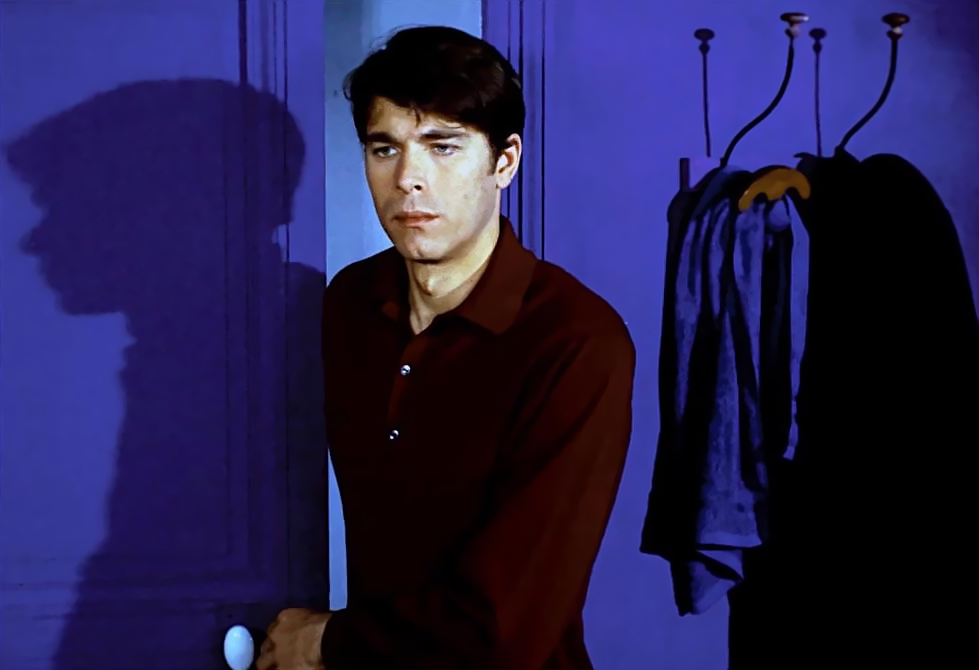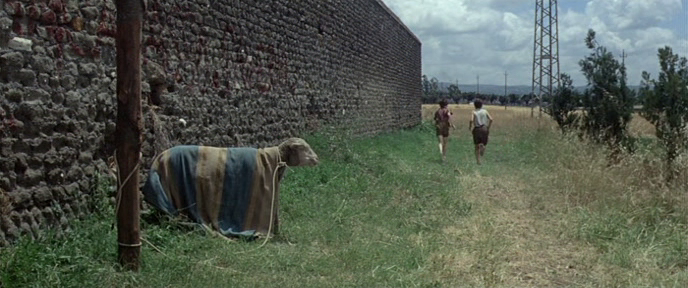“Is it the form of the clouds, or the tints of the sky, or the colours of the surrounding objects which are so changeable, which have troubled my thoughts as they passed before my eyes? Who can tell?” Le Horla [The Horla] (Jean-Daniel Pollet, 1966)
Aug
19
violet

The narrator enters a violet-blue room via a lavender-purple corridor (via). DP: Jean-Jacques Rochut.
Violet: a building or structure *
– Guy de Maupassant, Le Horla, 1887 (via)
Objects and rooms have distinct colours ranging from the deepest blues and violets to a pale lavender, a muted silver and shocks of yellow. The usage of colour in Le Horla is striking throughout and reminds me of how Van Gogh's paintings became increasingly colourful as his madness enveloped him.
* the Bales 2025 Film Challenge for August is not date-related but lists, for the most part, the colours of the rainbow.
LaurentTerzieff
view
view
Ostia [A Violent Life] (Sergio Citti, 1970)
Sep
11
supper

A group of vulgar looking people eating outdoors at a very long table in front of an old crumbing wall at a very long table. The scene is a re-enactment of Da Vinci's Il Cenacolo / Last Supper. DP: Mario Mancini.
view
Ostia [A Violent Life] (Sergio Citti, 1970)
Sep
10
National Pet Memorial Day

Bandiera and Rabbino and their beloved Rosina, thoughtfully covered with a woollen blanket. DP: Mario Mancini.
Bandiera and Rabbino, two young bumpkins, find that Rosina, their beloved ewe, has been butchered by their father. Years later, the two share their lives with a beautiful blonde who they found believing to be dead.
